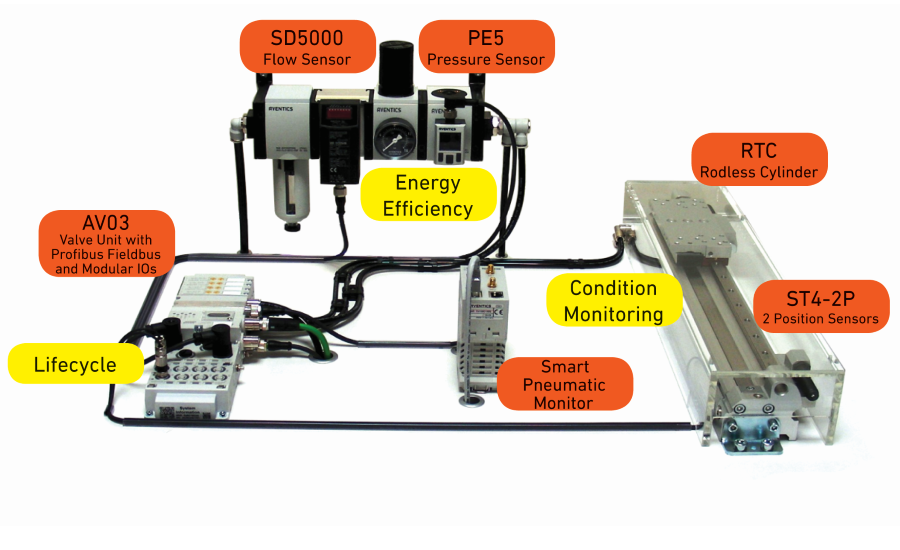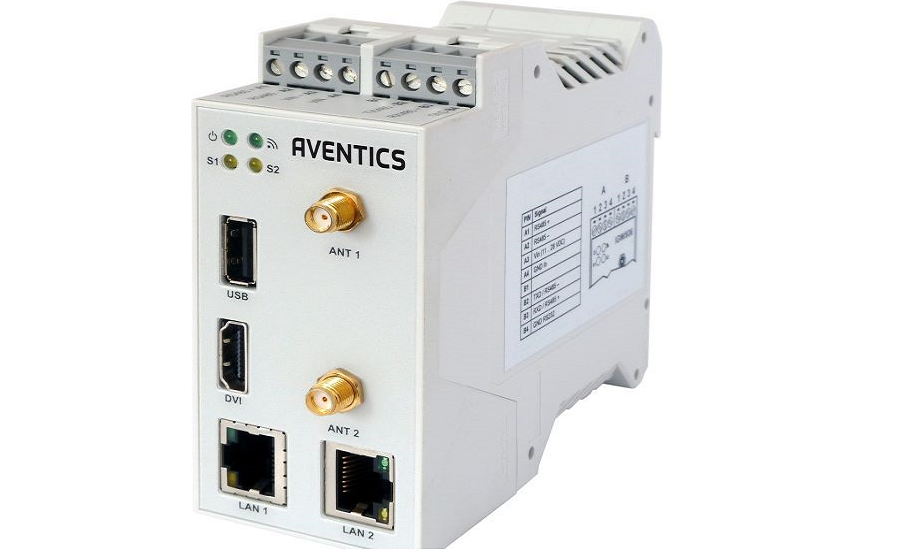IIoT-Enhanced Pneumatics Keep Packaging Machines Running Efficiently

Pneumatics is most commonly deployed in packaging machines for devices like sealers and grippers, actuators to move packages, components for liquid filling, bottle production or in pick-and-place machines for material handling.
With the emergence of the Industrial Internet of Things (IIoT), packaging original equipment manufacturers (OEMs) are finding significant opportunities to improve the operation of pneumatics technology, helping users boost energy efficiency, enhance safety and cut downtime and maintenance costs.

Machine builders in many industries are responding to the IIoT by adding sensors to their equipment, with the resulting data made available for analysis and, as systems become more advanced, converted into actionable information. Pneumatics lends itself well to these new capabilities, allowing packaging companies to know more about the operational performance of their equipment and packaging lines.
For example, OEMs can include pneumatic monitoring capabilities that can detect a pneumatic system’s operating state, analyze the data, report on energy efficiency and more. They can provide reliable information on the condition of actuators, valves and other devices, without involving the machine controller.
In addition, machine builders can use IIoT capabilities to enhance pneumatics’ already extensive diagnostic features, measuring critical parameters like cylinder velocity. This helps to ensure pneumatic components continue to respond in time, and in sync, preventing machine crashes causing unpredicted down time.
Pneumatic IIoT Maintenance Benefits
Maintenance activity is where pneumatic IIoT capabilities truly stand out. Wear and tear is a fact of life in any industrial setting. Predictive and preventive maintenance programs are essential to managing equipment life cycles efficiently and maximizing the return on investment and overall equipment effectiveness (OEE) of production equipment.
Predictive maintenance is the management approach plant engineers use to track and assess the condition of in-service equipment, performing maintenance only when warranted. Using data from IIoT sensors, maintenance technicians can predict that a shock absorber on the end of an actuator is deteriorating, just by sensing an increase in cycle speed, even by a few milliseconds. Knowing which equipment needs maintenance, plant engineers can avoid unplanned downtime on the packaging line, replacing components with shorter and fewer planned machine stops.

Preventive maintenance involves regular, routine action to prevent equipment breakdown. It can include partial or complete overhauls, oil changes and lubrication, minor adjustments to device settings and cleaning of machine components exposed to environmental contamination.
Pneumatic components can benefit from both. The integration of the data-driven insight from predictive maintenance with the scheduling efficiency of preventive maintenance can help plant management predict and address issues before they result in equipment damage, production loss or injuries. It also allows time for ordering a replacement, reducing the need to have a full inventory of system-critical replacement parts “just in case.”
The end goal: using IIoT data to ensure that machines are self-diagnosing and continue to work safely, efficiently and at full capacity.
Looking for a reprint of this article?
From high-res PDFs to custom plaques, order your copy today!







